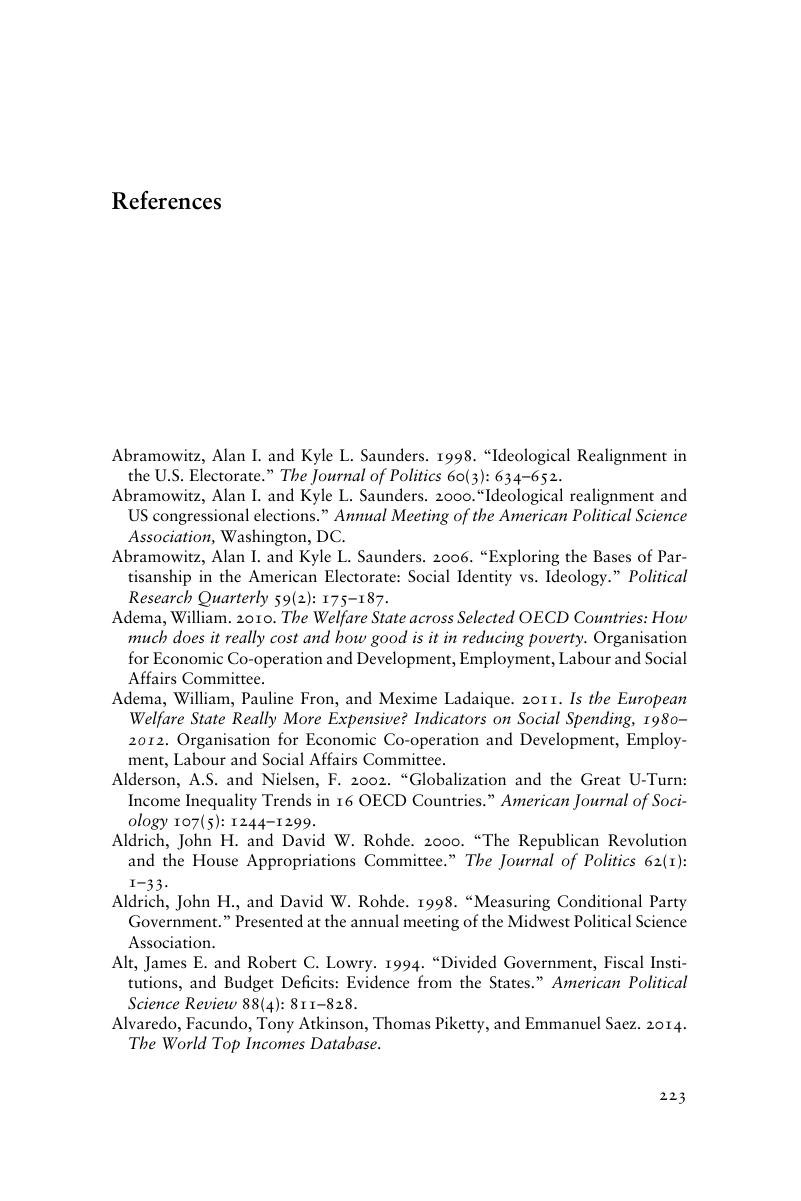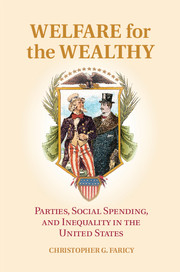Book contents
- Half title page
- Title page
- Copyright page
- Dedication
- Contents
- Contents
- Contents
- Book part
- 1 The Politics of Social Policy in America
- 2 The Partisan Politics of the Divided U.S. Social Welfare State
- 3 Political Parties and Public Social Spending
- 4 Government Subsidies and the Private American Social System
- 5 A Republican Welfare State?
- 6 The Modality of Social Spending and Income Inequality in America
- 7 The Implications of the Divided American Welfare State
- Bibliography
- Index
- References
Bibliography
Published online by Cambridge University Press: 05 September 2015
- Half title page
- Title page
- Copyright page
- Dedication
- Contents
- Contents
- Contents
- Book part
- 1 The Politics of Social Policy in America
- 2 The Partisan Politics of the Divided U.S. Social Welfare State
- 3 Political Parties and Public Social Spending
- 4 Government Subsidies and the Private American Social System
- 5 A Republican Welfare State?
- 6 The Modality of Social Spending and Income Inequality in America
- 7 The Implications of the Divided American Welfare State
- Bibliography
- Index
- References
Summary

- Type
- Chapter
- Information
- Welfare for the WealthyParties, Social Spending, and Inequality in the United States, pp. 223 - 236Publisher: Cambridge University PressPrint publication year: 2015



